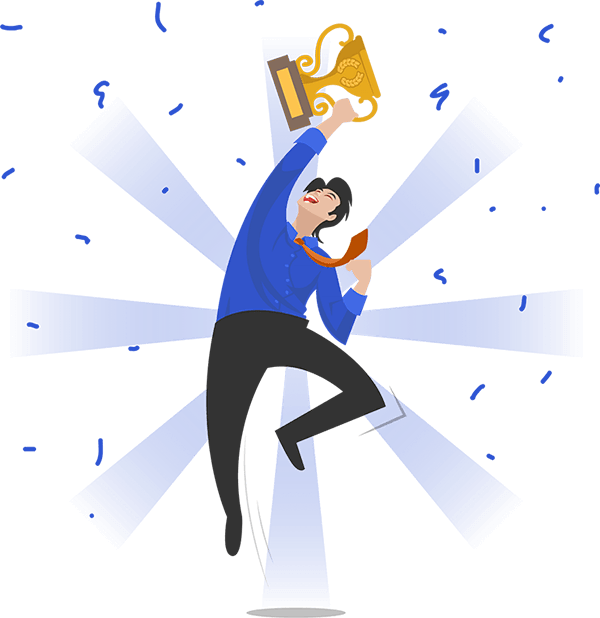Children all have innate abilities to dance, there are many examples of infants dancing you just have to search YouTube. A fun example I found is https://bit.ly/2kh0vdr . This video in particular not only shows the child moving to the music when he hears the change in volume and tempo but also the way in which he reacts when the music volume is lowered and when the song ends. He is beginning to understand the way in which his body can move as well as understand that he is moving for an outcome, in his instance happiness. Dance embodies one of our most primal relationships to the universe, children find it innate and move naturally because it is the beginning before words can be formed and is evoked when thoughts or emotions are too powerful for words to contain, as seen by the boy. Dance is a natural method for learning and a basic form of cultural expression. It is seen that all cultures shape movement with rhythm into a form of dance, it is fundamental that education provides our children with the developing benefits and learning opportunities that are unique to dance to form an artistic understanding of Dance (INDEO, 2019).
Don't use plagiarized sources. Get Your Custom Essay on
Benefits of Dance for Child Development
Just from $13/Page
Throughout this essay I will further explore the connections between dance and the physical, social and emotional wellbeing of children as well as how it is placed within the framework for Early Childhood Education and the role that educators play in facilitating the dance opportunities for children.
Dancing supports many areas in a child’s development including academic, social wellbeing and emotional wellbeing. Dance is not only essential for children’s learning but can also be a key tool in helping children who are Gifted and Talented overcome and move past barriers they may face.
Dancing involves body awareness, in order for a child to have good body awareness the brain must receive messages from the senses in order to create a map of the body and understand its relationship to space. This awareness is gained through activities that stimulate the inner ear; balance activities are key to this. Body awareness affects motor development which leads to poor thinking and moving. Children whom which have to concentrate on moving fingers to write their spelling and access to other key learning areas are delayed. Whether or not they understand concepts they will struggle academically in relaying in writing what they know. Body awareness activities support all learning from early childhood and beyond, for a child to learn how to cross their midline is needed in order to learn how to write in Western cultures from their left to right across a page (Roy, Baker & Hamilton, 2019).
Get Help With Your Essay
If you need assistance with writing your essay, our professional essay writing service is here to help!
Essay Writing Service
Lobo and Winsler (2006) explains that the aptitude for children to achieve social goals, engage effectively in complex social interactions, make and maintain friendships, gain entry to social groups and achieve peer acceptance, is an extremely important domain of child development. Peer groups are one of the most important social settings that children are involved in, however, children who don’t have or have very poor social skills are at risk of experiencing a variety of problems throughout childhood and beyond, including rejection, behaviour problems, school failure, and low self-esteem. The preschool, early childhood period is a particularly important time for the development of social skills, at this time in development children begin to develop their social interactions beyond their parents and care givers and take on the task of building relationships and acceptance with their fellow classmates. Dickinson and Poole (1998) (as cited in Lobo & Winsler, 2006) found that creative dance improved children’s co-operation skills, communication skills, their ability to belong to a group (a key aspect of the EYLF), ability to follow and the awareness of others. They suggest that creative dance promotes a connection between children through the sharing of ideas, the physical space and the acceptance of individual differences. This may help young children to be impulsive and creative leading to increased leadership and communication skills. Creative dance enhances social development through enhancing imaginative play and co-operative activities.
Emotion regulation, or the ability to control emotional affect and expression, is a characteristic of social-emotional capability. As children age, they become competent to regulate their own emotions. This ability is in turn associated with improved functioning and ability to adjust over time. Several studies have arisen that focus on the connections between the arts participation and emotion regulation in children (Menzer, 2015). It is seen in Menzer (2015) that toddlers whom have been integrated into an arts program made up of daily music, creative dance, and visual arts showed improvements in positive and negative emotion regulation over the course of the school year compared to others (Brown & Sax, 2013 as cited in Menzel, 2015). Its seen that Infants who participated in a six-month “active” music group with singing and dancing had better outcomes for emotion regulation behaviours than did infants in a six-month “passive” music group just listening to background music.
Dance plays a key role in how many children will learn to use motor skills as well as how to socially and emotionally engage and regulate these skills using dance as an outlet. As well as being able to see how dance can support these areas of development in children, there are many theoretical and philosophical theories in how dance can be implemented successfully into Early Childhood centres and classrooms and the roles in which educators have in the children’s explorations of creative dance.
Sööt & Viskus (2014) states that the pedagogical practice of dance education has, changed considerably, it has habitually followed a “transmission” model to teaching, where the students learn by copying specific movement phrases demonstrated by a skillful teacher. This is unfortunately still the way many teachers feel the most comfortable when teaching dance, although it is now widely accepted that the content knowledge of dance, in order to be transformed for knowledge across other Learning areas needs to involve far more than just dance technique and control. Teachers need a variety of teaching strategies to motivate and engross their students.
As Stinson (1985) states, that Piaget (a key contemporary theorist for dance) splits development of children into four stages the first two being important for Early Childhood educators to understand the abilities of dance. The Sensory-Motor Stage, this stage is from 0-2 years, children become able to explore movement, imitate and invent it, and solve problems using it. Early in infancy, at about one to four months, the child moves just because it feels good.
Piagets next stage is the Pre-Operational Stage, from 2-7 years. Piaget sees that there are significant developmental traits of this age that can impact the teaching of dance during this stage. Egocentrism, the child cannot see the viewpoint of another, rules in the dance setting should be kept to a crucial minimum, and teachers should be supporters as much as facilitators in the class. Centration, the child is unable to see the “whole picture.”, for example a group of children aged 3 cannot form a circle without direction, children of this age struggle to individualise themselves and also picture themselves as a part of a group in a circle at the same time. The child’s inability to use transformation; a child can imitate one position and then another, but the individual will not remember how he or she got the new position, a key aspect in dance when forming patterns and routines. The fourth major obstacle seen by Piaget is the child’s inability to reverse mental operations, which here refers to the inability of doing and undoing, the inability to reverse operations means that at this stage we would not expect the child to be able to follow more than one direction at a time in order to create a pattern of movements.
A pedagogical approach to dance to aid the teacher through these stages is a Holistic approach. Teachers in a holistic dance environment sees the person in its whole, uniting the body and the mind, the curriculum and the community, so that they could address the human as a whole. Gilbert (2005) (as cited in Sööt & Viskus, 2014) states it is important that dance teachers are responsible for student progress as dancers (technique), as dance-makers (creation), and as appreciators of dance as an art form (understanding of dance in society). Children even in the beginnings of dance during Early Childhood need to be introduced not only to the joy of moving one’s body but to also understand how dance can symbolise cultures and the ways in which it can be used to explore their own communities and environments. Holistic dance teachers introduce their personal human design, increasingly more attention must be paid to the human being and to the communication with its surrounding environment, understand one’s role in the process and be ready for change (Sööt & Viskus, 2014).
The role of the educator is to encourage and engage children in creative dance to be immersed into a new form of language that for some children is the only way in which they feel the most comfortable to communicate through. Movement is creative expression and plays an important part in building self-image, self-awareness and self-direction. Educators key role in dance is to remember the child as a whole and not just their body. As previously explained in this essay the educator needs to see the child in its holistic view. The role of the educator is to understand each outcome that the EYLF (DEEWR, 2009) has outlined for the Early Years and know how dance can help each of them to include all children in completing the outcomes. it is essential for teachers to understand the many ways of learning and how they should incorporate them into their teaching as children all learn in a diversity of different ways. It can be seen that the arts can be an effective way to enable to be inclusive and engage all students within the classroom, approaches need to be thoughtful to the outcomes of the lesson and classroom environment just as I have previously outlined by using a holistic approach (B. Roy, Baker & Hamilton, 2019). Learning needs to be student driven to as each individual needs to be understood in their own contexts and worlds in order to enhance their knowledge and understandings. As Bennett (n.d.) explains dance cannot just depict meaning by itself; place, costume and other props need to be present in order to create the ‘atmosphere’ in which creativity and meaning derives the way in which we intemperate the movement. Children need to draw upon many ways of learning to be able to fully immerse themselves within dance and its true abilities to communicate. Each outcome in the EYLF (DEEWR, 2009) involves an aspect that can be explored through dance to have a strong sense of identity one first needs to understand their movements and body, dance enables one to be connected and contribute to their world as they discover and learn about different styles of dance and the cultures they come from. Dance as talked about previously in this essay can give children a strong sense of wellbeing, allow them to be confident involved learners, and be effective (non-verbal) communicators.
To sum up this essay Dance allows children to explore all aspects of themselves and their lives, enabling them to understand and have an awareness of themselves, attain social skills control and express themselves emotionally. Dance in embedded into many cultures and normally to relay to others information and knowledge to be passed down, dance at its core enables a form of communication that allows all children the opportunity to learn. Dance is connected to all aspects of a child life from their beginnings of feeling joy to the first movements they make with their arms to non-verbally communicate. A quote from Stein (n.d.) that outlines the sole purpose of dance and all Creative Arts in classrooms, “Children are born Musicians, Dancers, Artists and Storytellers and the opportunities for healthy development are endless. We just have to provide the canvas, the paper, the paints, the materials and the welcoming environment, setting the stage for creativity, learning and fun”.
References
Bennett, K. (n.d.). The Language of Dance. Universidade de Lisboa. 56-67.
DEEWR (2009). Belonging, Being & Becoming: The Early Years Learning Framework. Australian Government Department of Education, Employment and Workforce, 38-44.
INDEO. (2019). Philosophy Underlying the Standards for Dance in Early Childhood. Retrieved from https://www.ndeo.org/content.aspx?page_id=22&club_id=893257&module_id=55419
Lobo, Y. B., & Winsler, A. (2006). The effects of a creative dance and movement program on the social competence of head start preschoolers. Social Development, 15, 501–519.
Menzer, M. (2015). The Arts in Early Childhood: Social and Emotional Benefits of Arts Participation. National Endowment for the Arts, 1-21.
Roy, D., Baker, W., & Hamilton, A. A. (2019). Chapter 4: Learning in Dance. Teaching the Arts: Early Childhood and Primary Education. (3rd Ed.) (p.94-120). United Kingdom, Cambridge University Press.
Roy, D., Baker, W., & Hamilton, A. B. (2019). Chapter 10-11: Organisation & Diverse Learners, pedagogy and the Arts. Teaching the Arts: Early Childhood and Primary Education. (3rd Ed.) (p.275-334). United Kingdom, Cambridge University Press.
Sööt, A. & Viskus, E. (2014). Contemporary Approaches to Dance Pedagogy – The Challenges of the 21st Century. Procedia – Social and Behavioural Sciences, 112(4), 290-299.
Stein, G. (n.d.). Quote. Retrieved from http://www.fusionkids.com/2015/02/06/quote-for-today/
Stinson, S.W. (1985). Piaget for dance educators: A theoretical study. Dance Research Journal, l7(1), 9-16.







